A career interrupted: Tom Bradley looking to make his mark at UCLA

Tom Bradley has learned to adjust in the nearly two months since he was hired as UCLA’s defensive coordinator. He knows that if his usual path to Sunset Boulevard gets cut off, he can jump on the Santa Monica Freeway, cut across, keep going to Beverly Glen and then cut back up to Sunset. He knows the music the Bruins play at practices is a bit different than what he’s familiar with, though he appreciated when coach Jim Mora threw on the Temptations’ “My Girl” for him last week.
What Bradley doesn’t know are the unique details of every player on his roster, at least not like he used to. How could he? A guy whose prior coordinator gig came at a school at which he spent 33 years can only pick up so much in two months.
Bradley began his coaching career as a Penn State graduate assistant in 1979 after he finished playing defensive back for the Nittany Lions. He served in a variety of roles before becoming the defensive coordinator in 2000. Popular speculation pegged him as the likely successor to Joe Paterno after retirement.
Charlie Strong ready for next step in rebirth at Texas; Punt, Pass & Pork
“It would be purely speculation to determine what the administration would have done,” says Bill Kenney, who coached at Penn State with Bradley for 24 years. “But Tom certainly had the qualifications to succeed Joe.”
However, tragedy and scandal intervened. Instead of leaving Penn State on his own terms, Paterno was fired on Nov. 9, 2011, after news broke of the horrifying sexual abuse crimes perpetrated by Jerry Sandusky, Bradley’s predecessor as defensive coordinator. Bradley worked the rest of the season as the interim head coach, but despite a lengthy investigation by former FBI director Louis Freeh that ultimately never mentioned Bradley’s name, he was passed over for the permanent position and chose to leave the program.
“He did an outstanding job at a time when we faced really tragic adversity,” Kenney says of Bradley’s time as interim head coach. “He has head coaching chops.”
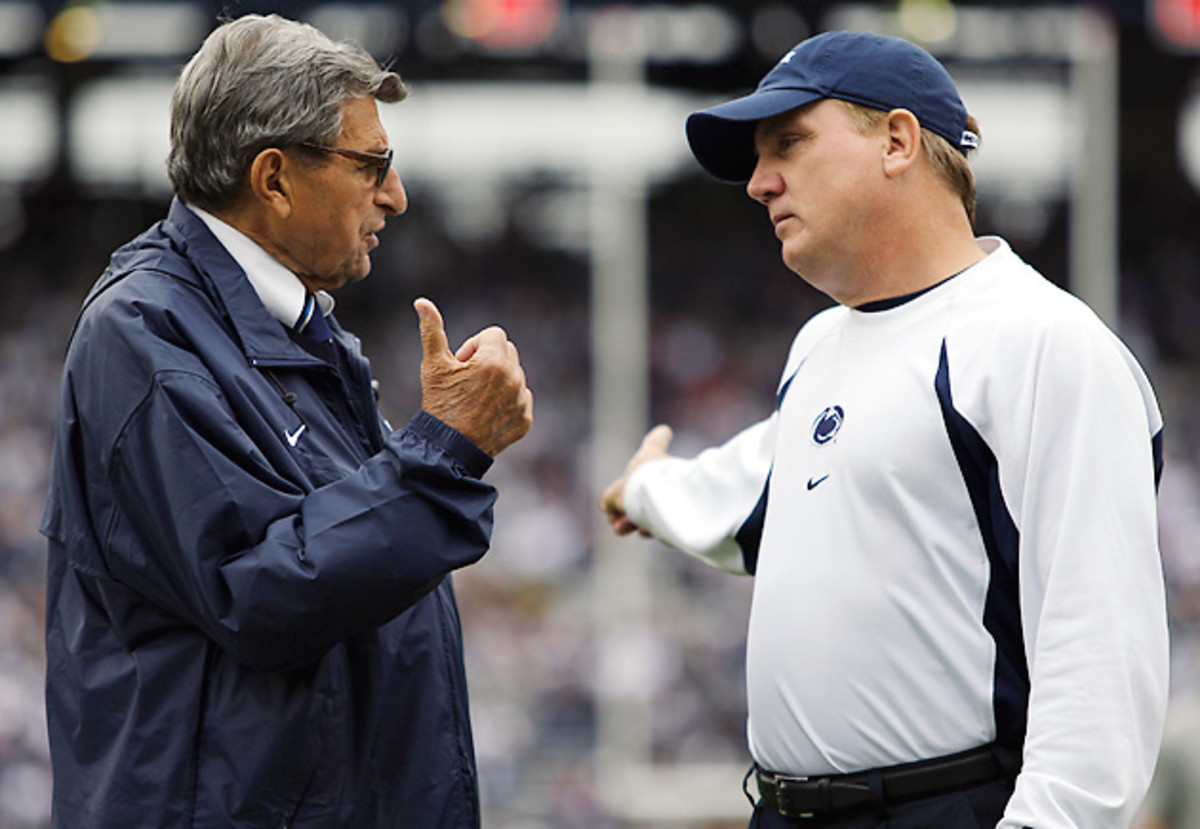
But Bradley would rather not talk about Penn State. He says he is “trying to get these [UCLA] guys better, and that’s my mindset.” Indeed, it’s hard to criticize his reticence when Kenney says Bradley “was so hurt by everything that took place, I know he agonized whether or not he would get back in to coaching, even though it was his life.”
After spending two seasons as a football analyst for CBS Sports Network, Bradley returned to the sidelines last season as the senior associate head coach at West Virginia. He helped the Mountaineers improve from 33.3 points allowed per game to 27.6. When UCLA defensive coordinator Jeff Ulbrich left this off-season for the Atlanta Falcons, Mora hired Bradley to replace him on Feb. 24. As West Virginia had determined the year before, UCLA was satisfied that any alleged cover-up of Sandusky's crimes at Penn State had no connection to Bradley.
“Our university and our athletic department in combination did a tremendous job of just making sure we went through the process in the correct way and did our research,” Mora told reporters after the Bruins’ first spring practice on March 31. “You can use the word ‘vet.’ We were patient, we talked to a lot of people.”
• MORE CFB: NCAA president Mark Emmert defends Penn State sanctions
The job and the location are big changes for Bradley, who grew up in Johnstown, Pa., and had previously never coached more than 100 miles from there. The bigger adjustment, though, is he has yet to go through a recruiting cycle and doesn’t know his UCLA players all that well. “I haven’t been in homes or know where they come from,” Bradley says. “When I get to know them as a person, I can do a better job coaching, so I’ve been trying to play catch-up there.”
The lack of familiarity matters more than just on the field. If a player was struggling academically at Penn State, Bradley knew his course load and could contact his family. At UCLA, Bradley is still learning his players’ support systems.
Can Mike Riley deliver on Nebraska's high expectations? #DearAndy
Bradley is more in synch during practices. He is busy installing the physical, fundamentally sound, bend-but-don’t-break defense he was famous for at Penn State. Between 2004 and ’09, the Nittany Lions never finished lower than 10th nationally in scoring defense.
“He doesn’t care how many yards of offense we give up,” UCLA junior linebacker Myles Jack says. “He doesn’t care about that. At the end of the day, all that really matters to him is points. I completely agree with that. If [our opponents] get 400 yards and zero points, we can laugh about that.”
While Bradley’s defenses have been consistently stout, he faces a new challenge in the Pac-12, where the offenses of Oregon, Arizona and Washington State bear little resemblance to what he saw in the Big Ten. He isn't worried, though, as he has the full spring and summer to prepare against offensive coordinator Noel Mazzone’s spread attack. A more traditional offense would be tougher, he says.
“If we got into a power game and people wanted to give us off-tackle powers and different things of that type of game—tosses, sweeps and all those different things—then we’d have to figure out a way to duplicate that,” Bradley says. “The other stuff comes easy.”
Some aspects of Bradley’s job haven’t changed a bit. He says Mora plans to use him to recruit his familiar territory in the Northeast, where Bradley landed standouts like Shane Conlan, LaVar Arrington and Paul Posluszny for Penn State. “All those guys that thought they were rid of me,” Bradley says of his high school connections in the region, “they’re not rid of me yet.”
It’s good to keep some things the same. After all, there is only so much room to adjust beyond the traffic and music lessons.
GALLERY: PAC-12 PLAYERS TO WATCH IN 2015
Pac-12 players to watch in 2015
Cody Kessler, USC QB
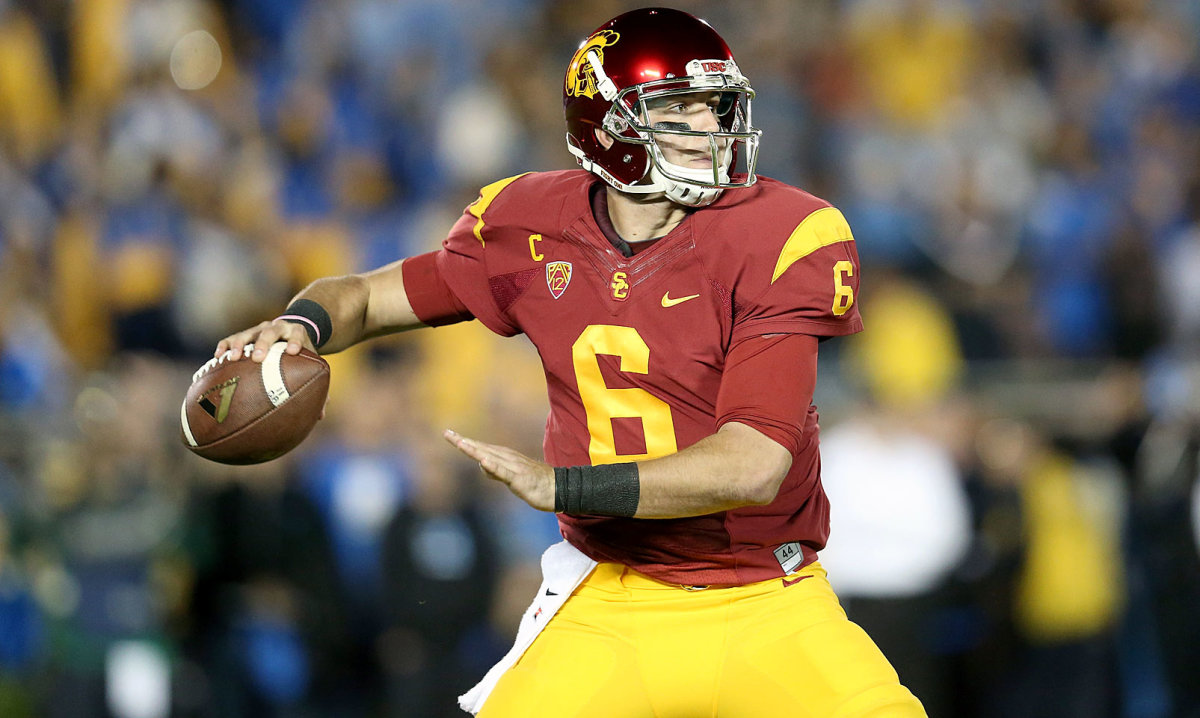
Kessler is tasked with continuing the legacy of great USC quarterbacks, and he seemed more than ready for the job last season. Kessler threw for 39 touchdowns with only five interceptions, completing about 70 percent of his passes. He has the kind of arm that could return the Trojans to national contender status and possibly inject himself in the Heisman conversation in the process.
Royce Freeman, Oregon RB
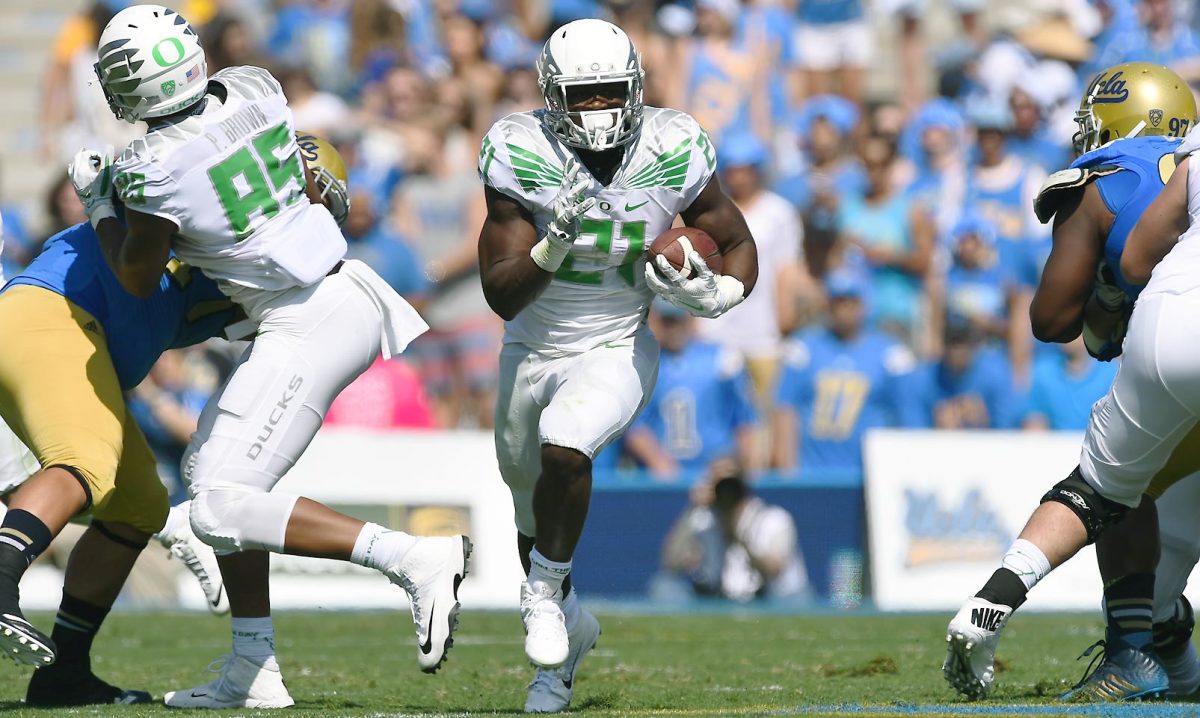
Freeman was a five-star recruit who saw playing time as a true freshman for the Pac-12 champion Ducks in 2014. He brings a power-running element to Oregon's backfield, and he bowled over linebackers last season on his way to over 1,300 yards and 18 touchdowns.
Scooby Wright III, Arizona LB
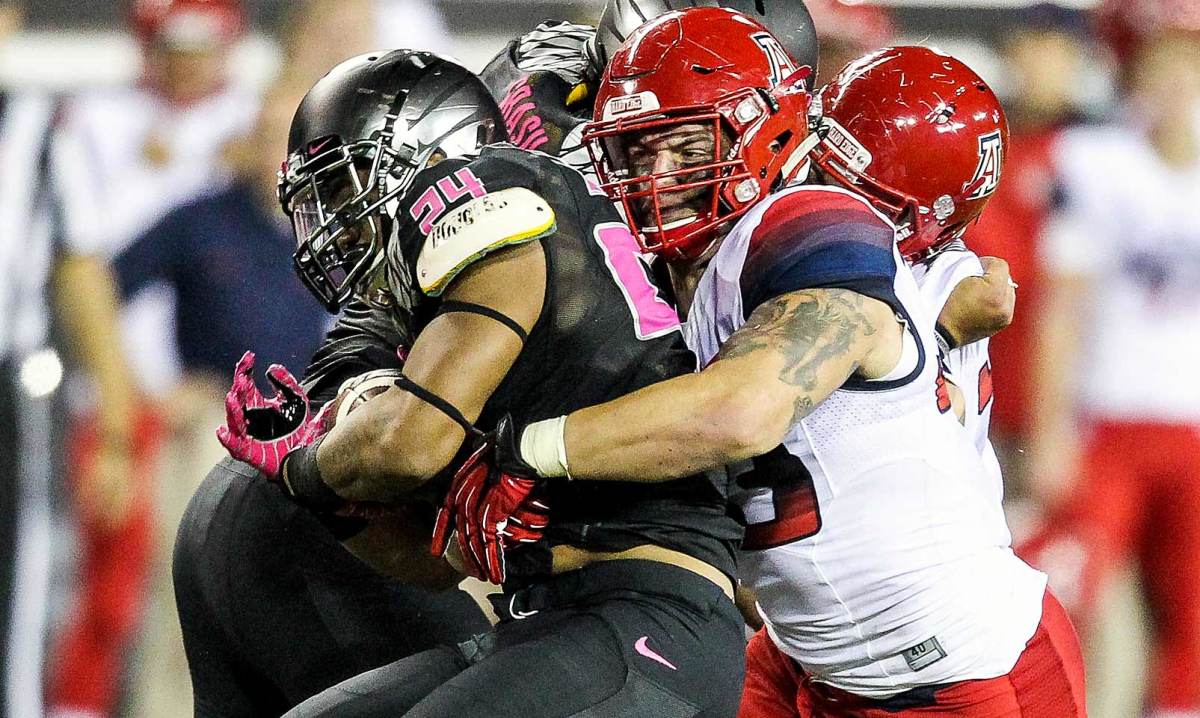
Wright was one of the most dominant players on either side of the ball in college football last season. He amassed an incredible 29 tackles for loss, 14 sacks and six forced fumbles for the Wildcats. Pac-12 quarterbacks are already looking forward to when Wright leaves for the NFL.
D.J. Foster, Arizona State RB/WR
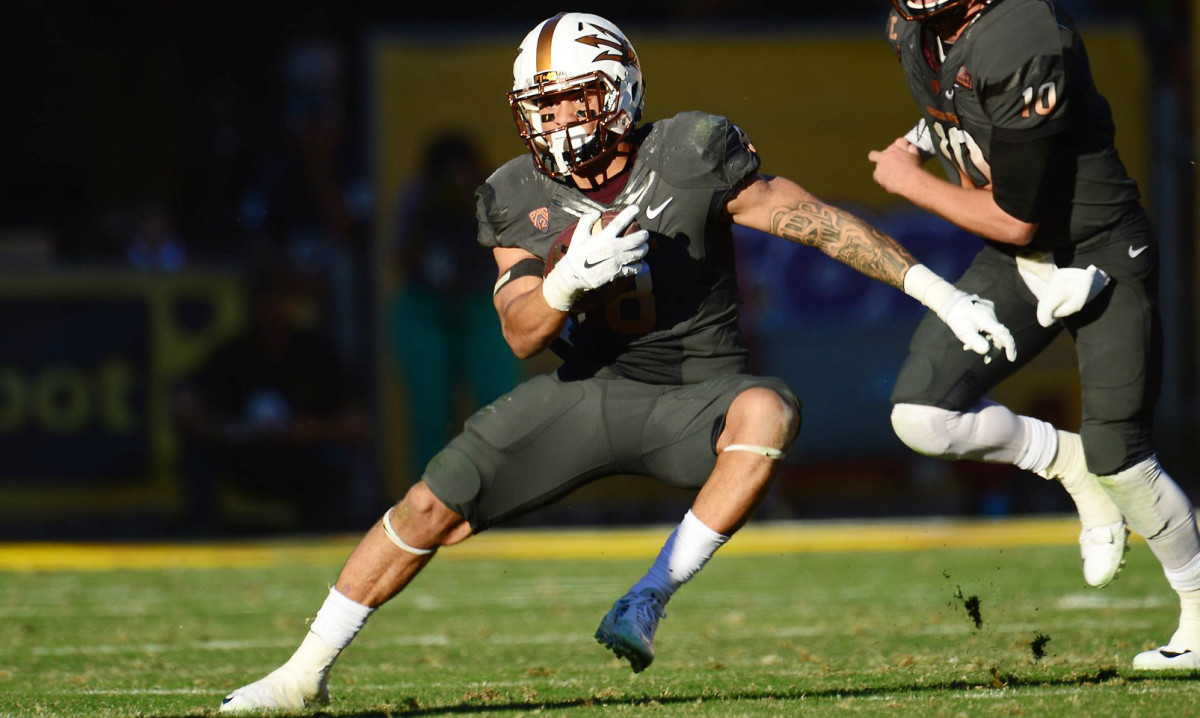
Foster was given his most responsibility in three seasons for the Sun Devils in 2014, and he responded by becoming one of the conference's most explosive rushing and receiving weapons. He ran the ball for more than five yards per carry on his way to 1,081 yards and also caught 62 passes for three touchdowns. With the emergence of Demario Richard in the backfield, Foster should spend more time in the slot in '15.
Su'a Cravens, USC S
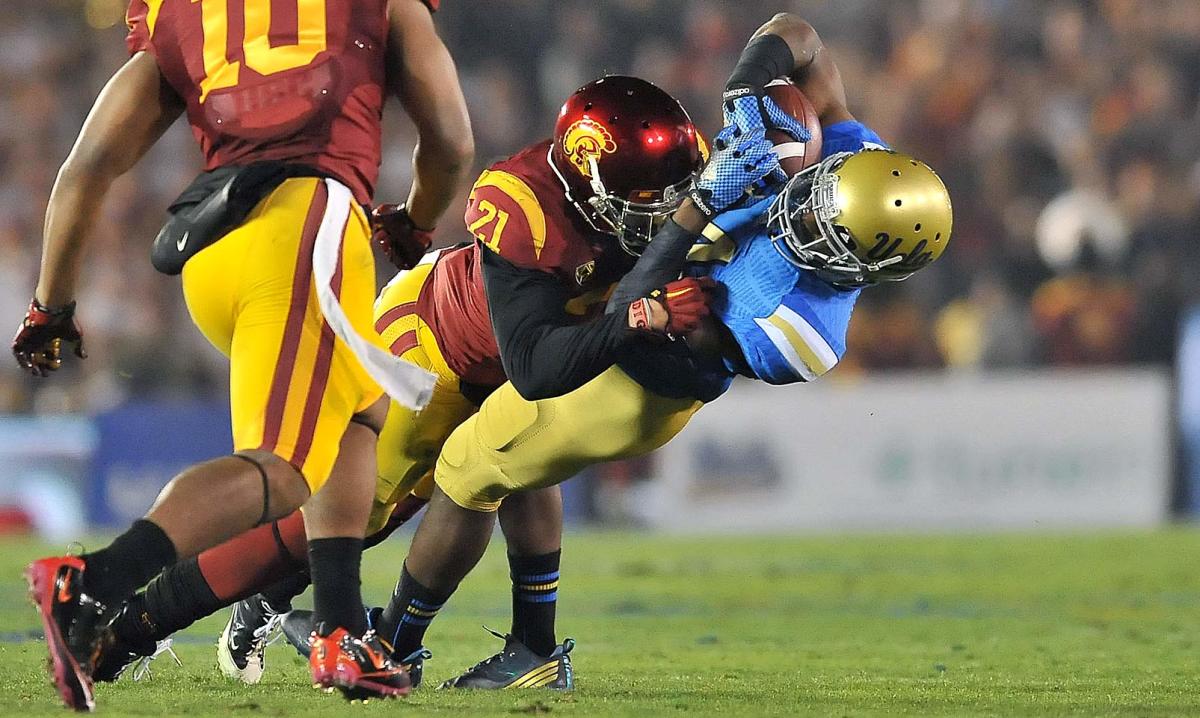
Cravens is the latest in a line of uber-athletic USC defenders. The hybrid safety-linebacker is a menace all over the field, recording five sacks and three interceptions last season. With star defensive end Leonard Williams off to the NFL, Cravens is the clear leader of the Trojans defense.
Nick Wilson, Arizona RB
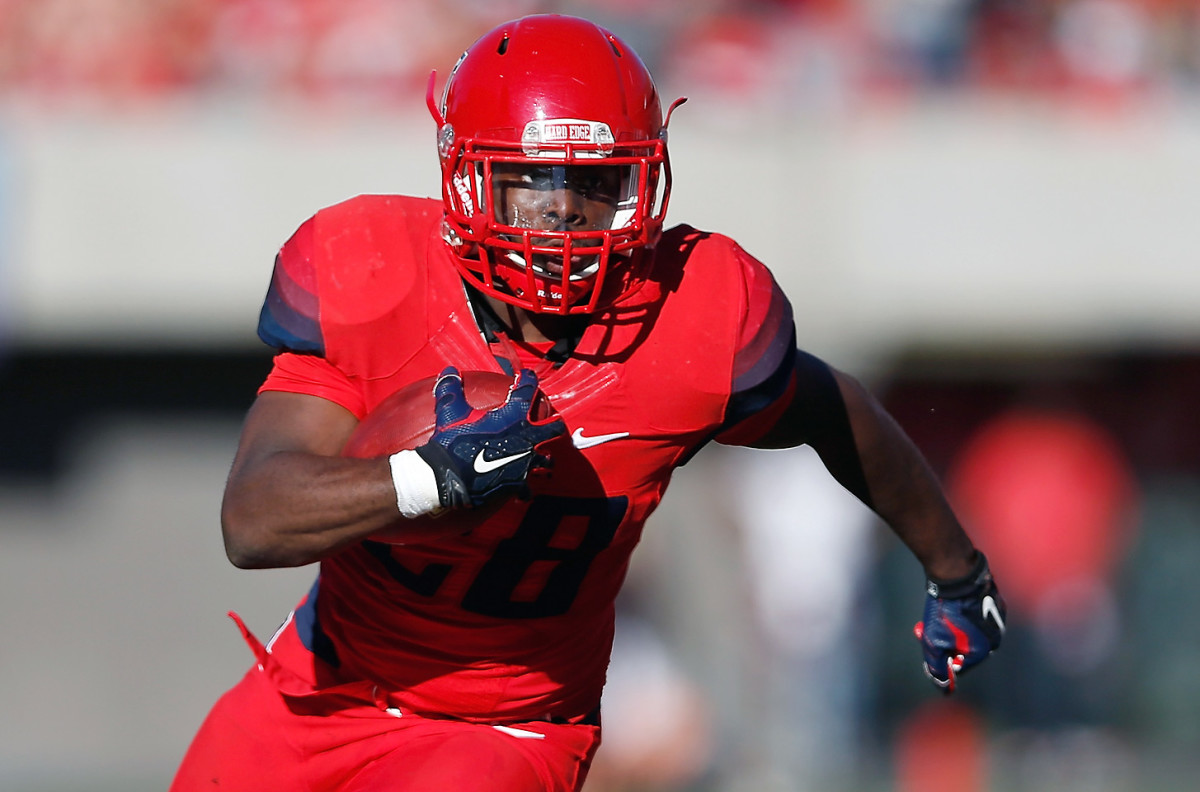
Wilson made his own case for the best running back in the state of Arizona, rushing for 1,375 yards in 2014 despite missing a game. The 5'10" rising sophomore weighs less than 200 pounds, but he proved he's capable of being a workhorse back for the Wildcats.
Myles Jack, UCLA LB
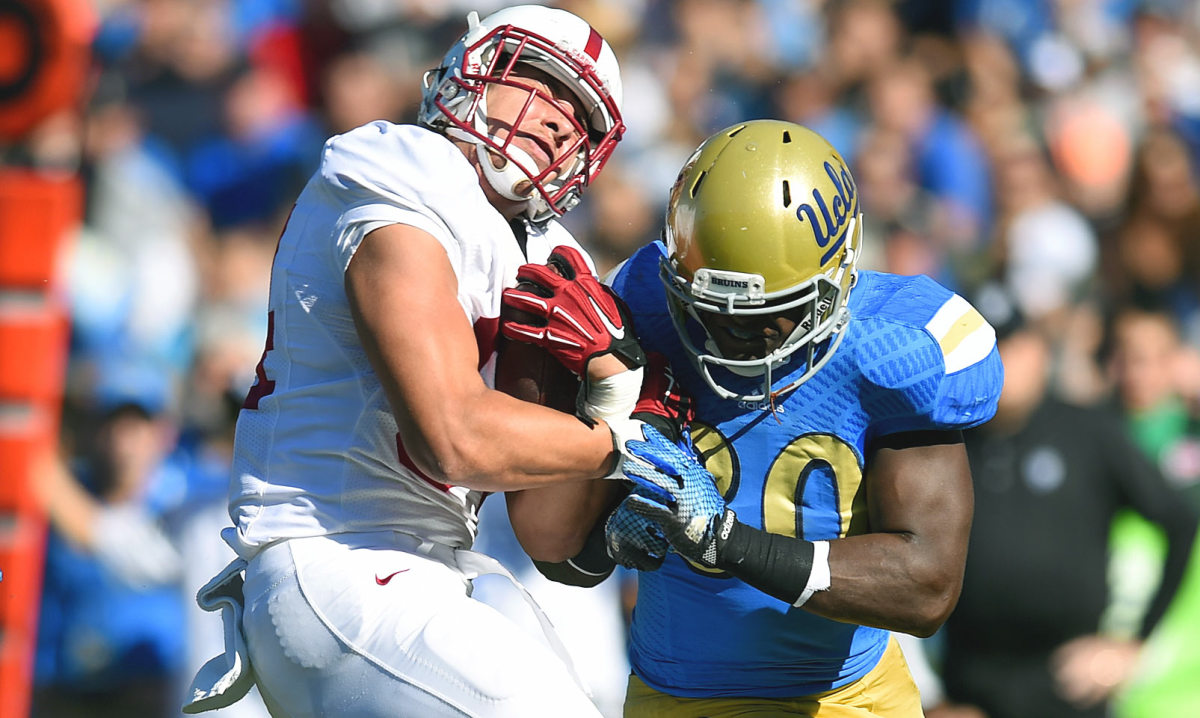
Jack is a tackle machine for the Bruins, and also spends some time evading tacklers on the other side of the ball. The former four-star recruit played both linebacker and running back in his first two seasons in Los Angeles, and he continues to be a true dual threat. With All-America linebacker Eric Kendricks gone, Jack's defensive responsibilities only increase.
Devontae Booker, Utah RB
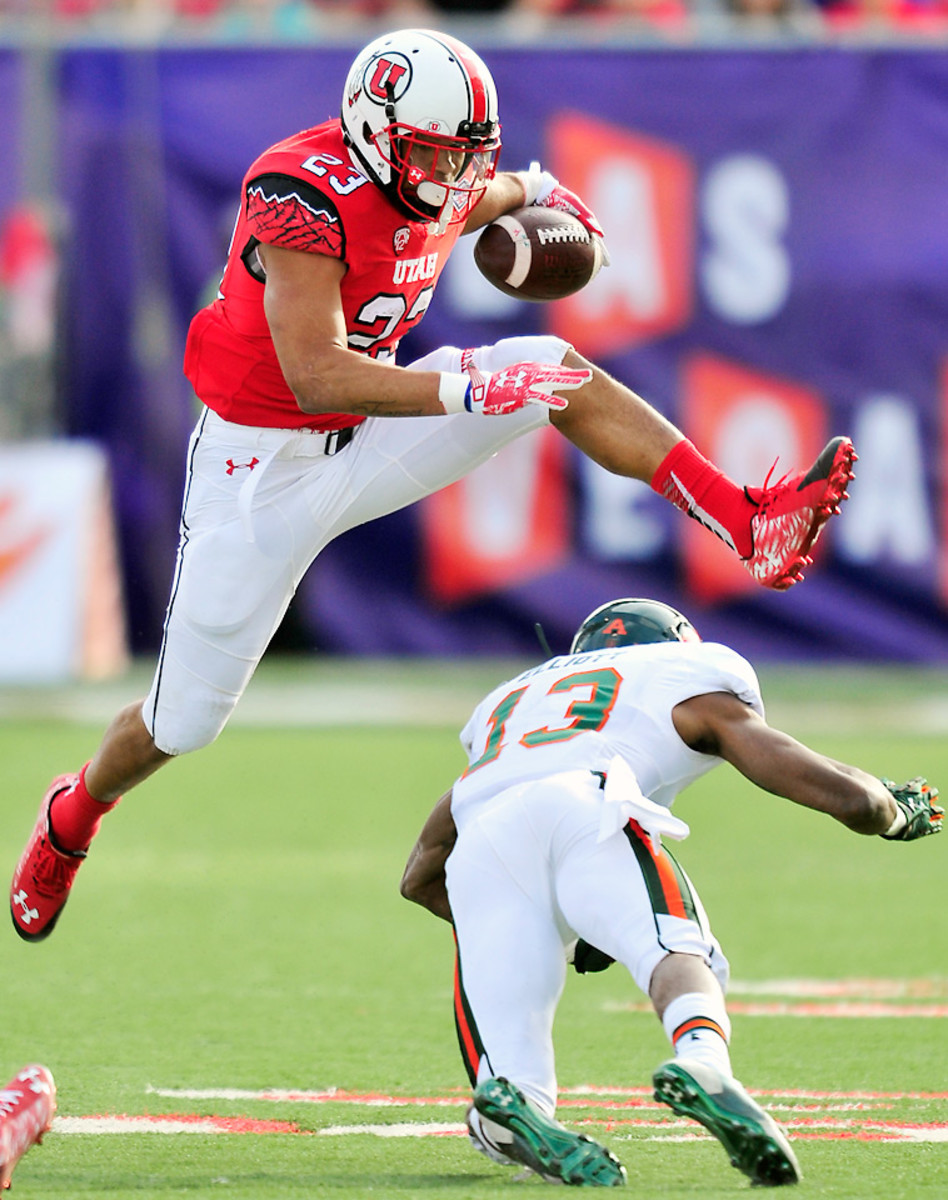
Booker is another one of the conference's dual threats coming out of the backfield. The American River College transfer ran for over 1,500 yards and caught 43 passes in his first season at Utah.
DeForest Buckner, Oregon DE
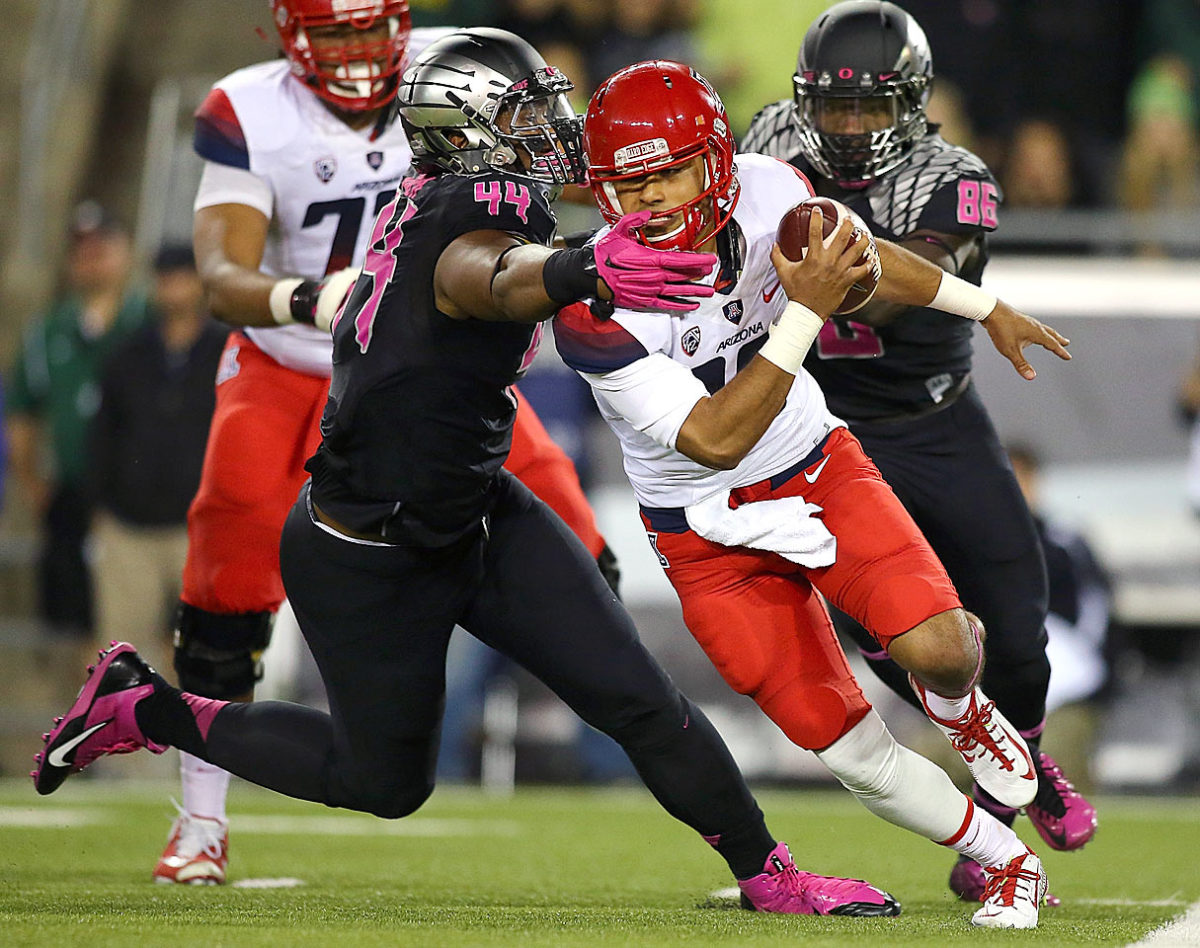
Buckner is back for his senior season as he tries to help Oregon return to the national championship game. He's a leader along the Ducks' defensive line, racking up tackles and pressuring the passer to the tune of four sacks in 2014. Fellow defensive end Arik Armstead's decision to leave early for the draft means the Ducks will need a monster season from Buckner.
Paul Perkins, UCLA RB
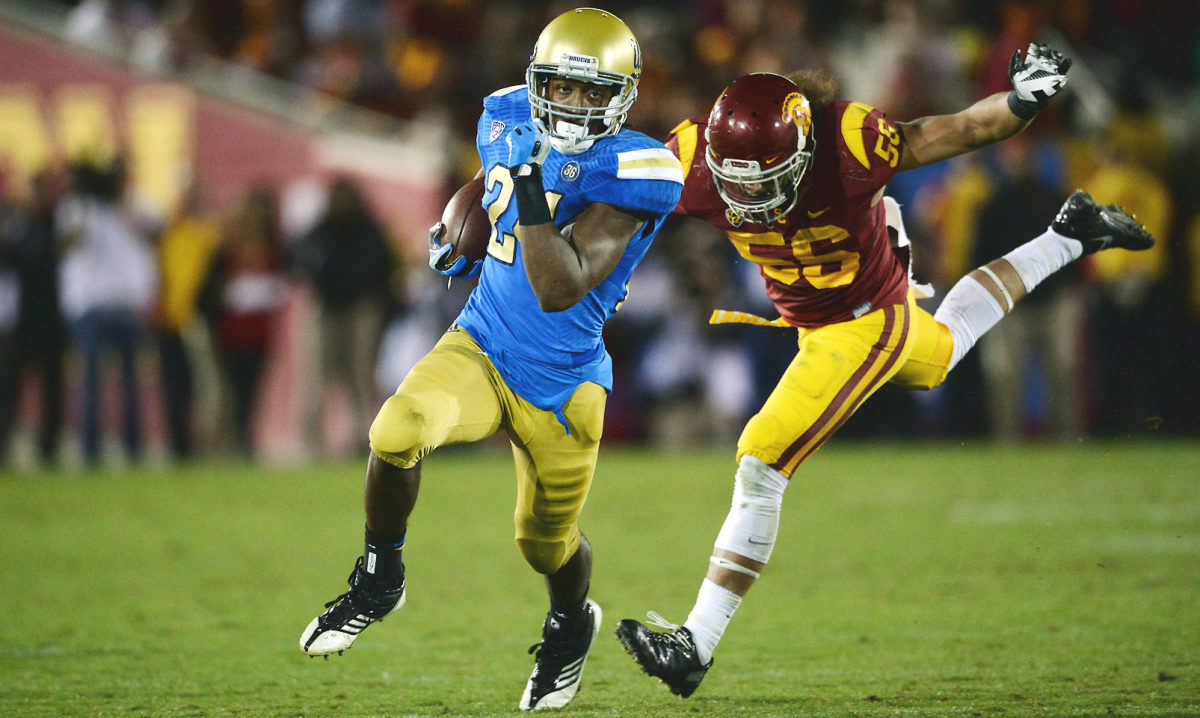
Perkins is—you guessed it—a running back who can also threaten defenses with his ability as a receiver. The rising junior averaged over six yards per carry and over seven yards per catch in 2014. His 1,575 yards on the ground last season were good for the second-highest single-season mark in UCLA history.
